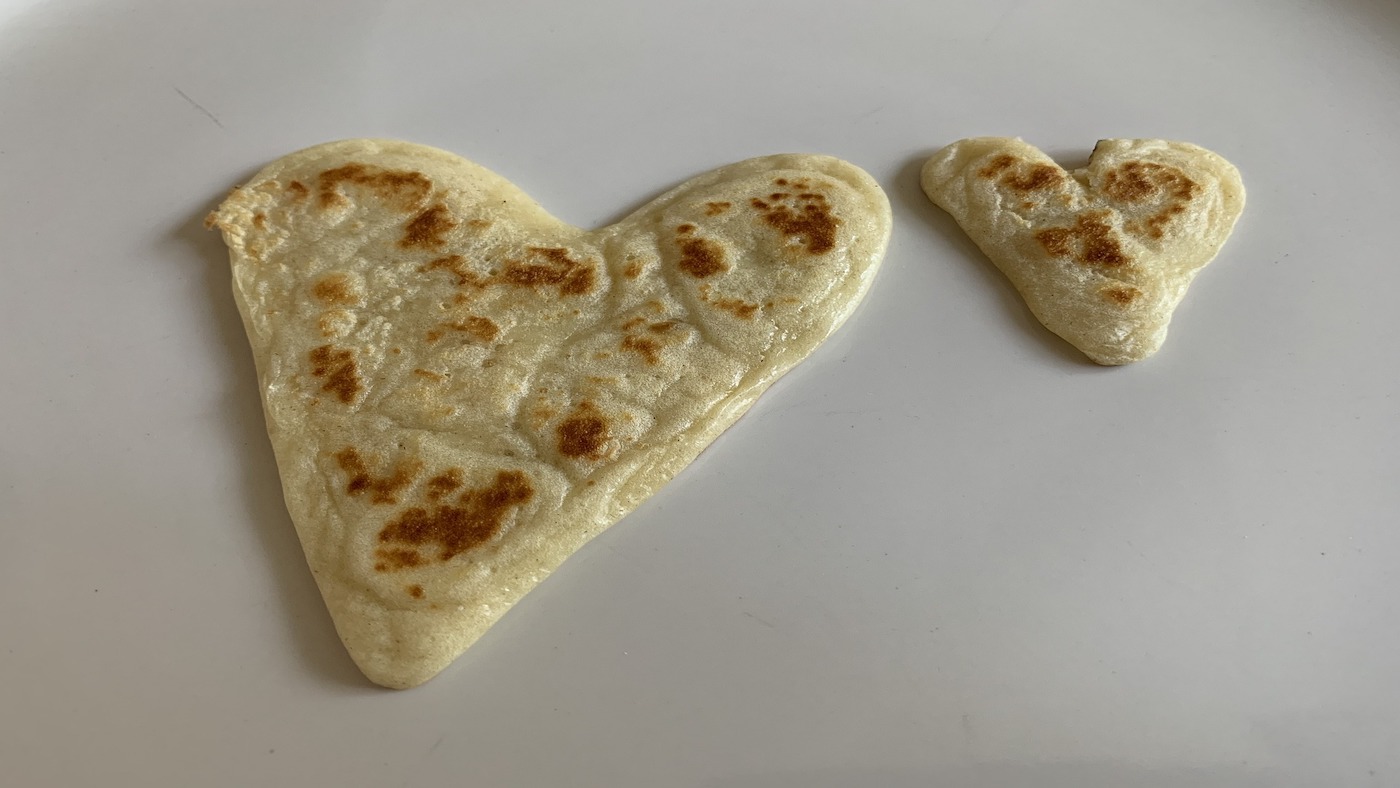Pancake week! Five activities for you to try

We love making pancakes. In fact, we love any type of cooking with young children. The opportunities for play are endless and there are so many skills they will be mastering along the way...
Language
Depending on your child’s age, this might be as simple as learning the names of the ingredients, describing the actions or it could be a whole host of words to describe the tastes and textures.
Building muscles in their arms and fingers
Your child will have to think about the best way to hold a spoon or whisk, and then move their arm and hand to mix.
Co-ordination and balance
They will also be able to practise using one hand to do one thing, while the other does something else, which might sound simple but is actually quite tricky!
Making choices and having control
Being involved in doing real things (like cooking) is really motivating for children.
Counting and chatting about change
They see how things change when mixed and then again when cooked. And they will hear lots of mathematical words as you measure and chat about the ingredients.
If you haven’t taken part in our My First Five Years Pancake Day challenge yet, then take a look. Your child may not have mastered all of the skills to make a pancake yet but with practise this will come.
Here are five other activities that extend their learning.
Create a toppings taste experiment
What else might go on top of a pancake?
Test out different combinations. Which one tastes nicer? Talk about textures. Try new flavours. You could even incorporate a trip to the shop – is there a fruit you have never tasted before?
For younger children, enjoy some sensory play. Squash and squeeze that banana!
Let them help you prepare the toppings
You might not be quite sure about giving your little one a knife. You could start with softer fruit, so they don’t need a sharp knife. And you can show them how to cut safely with their fingers away from the blade.
Doing a real job like cutting their own toppings is great for your child’s confidence (you trust them to use this – so they must be able to!) as well as for developing strength and control of their hands and fingers which will help them with writing, drawing, brushing their own teeth and much more in the future.
Sort your fruit toppings
With fruit you could count and sort it into different bowls. Talk about colours, differences and similarities. Which bowl has the most? Which one has the least?
You could count the pieces of fruit into the bowl for a younger child, or if your child is older suggest they count how many pieces they’ve chopped as they put them into the bowl.
Chatting about numbers, and which fruit you’ve got, will probably happen quite naturally, so don’t feel like you need to work through a list of questions. If your child feels like they’re being tested, they will probably stop answering!
Extend the mixing process
If your child enjoyed the actual making of the pancakes first time around, you could do it again and extend this play. Add in some different equipment such as a medicine syringe for adding the milk, some bigger and smaller cups, a measuring jug and weighing scales.
For older children, you could ask if they can recall some of the steps or experiment with the quantities. If you leave out the eggs, this can be low-cost as well as lots of fun, and they’ll be developing their thinking (cognitive) skills.
Learning the order of the recipe, and recalling this in the future, will help them develop important executive function skills (the skills they need to plan, solve problems and achieve their goals).
You could make a simple picture recipe for your child to follow, so they can do even more without your help. Putting steps in the right order will help your child develop their thinking skills and is an important part of telling a story.
Using different equipment will give your child’s hands a bit more of a workout as they hold things in different ways.
Read some Pancake-related stories
Mr Wolf’s Pancakes by Jan Fearnley is fun and has some good talking points about sharing and helping others.
We love Eric Carle’s Pancakes, pancakes! You’re always in safe hands with any of Eric Carle’s picture books.
Pancakes to Parathas: Breakfast Around the World by Alice B. McGinty is a good one for learning about different foods and cultures around the world, with lovely illustrations.
Create pancake plate art
Who says that the toppings just have to go on top? Can you make an animal shape? A sunshine using chopped strawberries? A teddy bear? Raisins are a good addition for this activity.
You might have in mind the perfect animal face made with the toppings you've given your little one. But try to resist directing them! Give them the toppings and see what they do. It might be a pile of fruit in the middle or they might carefully place a slice of strawberry at the edge.
They will be developing…
Physical skills – picking up and placing toppings (or picking up a bowl and tipping the contents onto their pancake!)
Squeezing a lemon is great for strengthening hand arches (these help us position our fingers).
Cognitive skills – thinking about where to put the toppings, older children might have a go at making a face or something else with their toppings.
Social and emotional skills – if you ask your child to choose some toppings for your pancake, they need to think about whether you like different things to them (that might be hard for them – so expect a pancake with your child’s favourite toppings on at first!).